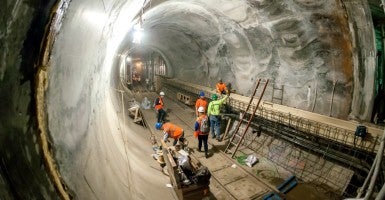The March employment report showed continued growth in the labor market. While the Bureau of Labor Statistics found unemployment ticking up 0.1 percentage points, the good news was greater labor force participation and 215,000 new jobs created during the month.
The payroll survey found widespread job growth throughout the service sector. The retail trade (+48,000), health care (+37,000), and professional and business services (+33,000) sectors showed the largest job growth. Total government employment also increased (+20,000), driven almost entirely by greater hiring by local governments.
Employment contracted in the goods producing sector. Manufacturing (-29,000) and mining (-12,000) both lost jobs. The mining losses were driven primarily by continued low energy prices, which have reduced investment in domestic energy extraction.
The payroll survey also showed average hourly earnings rising 7 cents in March to $25.43. Over the past year, average hourly earnings have grown 2.3 percent—well above the 1.0-percent inflation rate over the same period. Americans with jobs are earning slightly more in inflation-adjusted dollars than they did before.
The household survey found that while employment rates still remain below pre-recession levels, more Americans are looking for work. The labor force participation rate increased 0.1 percentage points in March, the fourth straight month it has increased. Sixty-three percent of adult Americans are now either working or looking for work. That is the highest labor force participation rate in two years. Among prime-age workers (those ages 25-54), the labor force participation rate hit a three-year high (81.4 percent).
Still, the economy has much farther to go before it has fully recovered from the recession. The labor force participation rate for prime-age workers remains 1.7 percentage points below pre-recession levels. And the average unemployed worker spends over six months (28.4 weeks) unemployed. The wounds from the Great Recession remain significant.




























